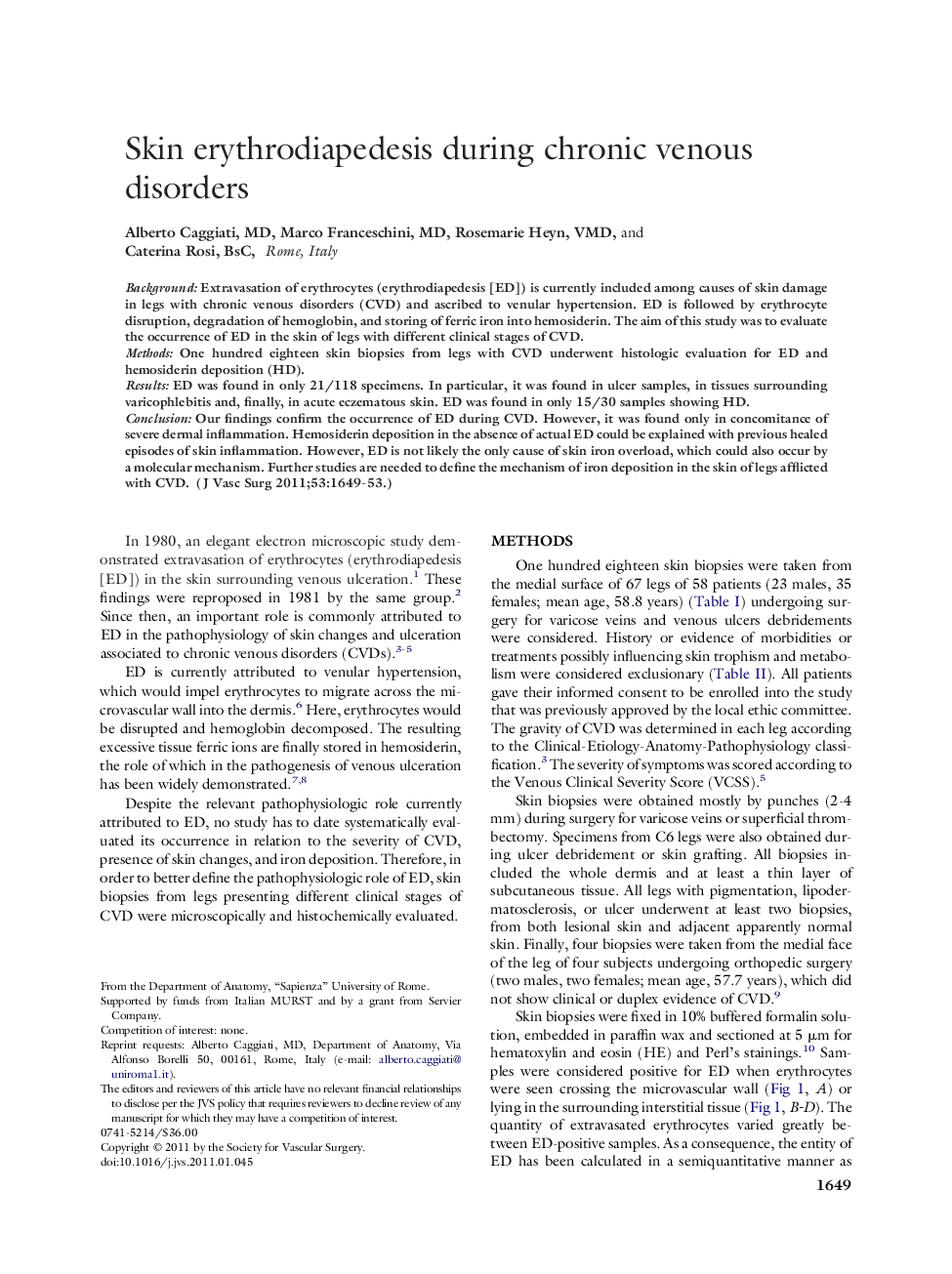| Article ID | Journal | Published Year | Pages | File Type |
|---|---|---|---|---|
| 2992669 | Journal of Vascular Surgery | 2011 | 5 Pages |
BackgroundExtravasation of erythrocytes (erythrodiapedesis [ED]) is currently included among causes of skin damage in legs with chronic venous disorders (CVD) and ascribed to venular hypertension. ED is followed by erythrocyte disruption, degradation of hemoglobin, and storing of ferric iron into hemosiderin. The aim of this study was to evaluate the occurrence of ED in the skin of legs with different clinical stages of CVD.MethodsOne hundred eighteen skin biopsies from legs with CVD underwent histologic evaluation for ED and hemosiderin deposition (HD).ResultsED was found in only 21/118 specimens. In particular, it was found in ulcer samples, in tissues surrounding varicophlebitis and, finally, in acute eczematous skin. ED was found in only 15/30 samples showing HD.ConclusionOur findings confirm the occurrence of ED during CVD. However, it was found only in concomitance of severe dermal inflammation. Hemosiderin deposition in the absence of actual ED could be explained with previous healed episodes of skin inflammation. However, ED is not likely the only cause of skin iron overload, which could also occur by a molecular mechanism. Further studies are needed to define the mechanism of iron deposition in the skin of legs afflicted with CVD.
